#click farms
Text


The most powerful moment of the coronation of King Charles III was not the gold glittering off carriages or epaulettes — not the pomp and show and signifiers of power.
It was precisely their opposite: when Charles shed his gold robes and stood in a thin white shirt, his frail humanity implied.
Then a screen was erected around him and, shielded, he had a private consultation with the Archbishop of Canterbury, who dabbed anointing oil with his hands on Charles’s bare breast.
"This was the most solemn and personal of moments,” Buckingham Palace said.
Charles was bare before God, in privacy, God being one of the last beings with no need to sign a non-disclosure agreement.


The Princess of Wales looked on as the screen shielded her father-in-law.
By contrast, she was at that point the most magnificent she had ever been, swathed in layer upon layer of regality, the dress, the robes, the hanging chains, headpiece and ribbons all serving to move the viewing gaze — subjects in every sense — from our awareness of Catherine Middleton with her everyday human DNA and towards the shared fiction of her transcendent queenliness.
Less than a year later, this moment is remembered with new and terrible power.
It is spring again, but it’s a time of hard Lenten moral reflection for us as a nation, in relationship to our royals, as well as an ever more voraciously unprivate modern celebrity culture.
Both the King and the princess have cancer, the latter’s disclosed by Catherine in an unprecedented video address on Friday, March 22.
Catherine’s speech was something of a plea bargain in which she traded not only her customary silence but her most personal of health ordeals in order to put an end to toxic rumours swirling online that had become in tone like an unruly mob rattling at the palace gates.
Or rattling at the figurative locks on her medical notes, with three workers at the London Clinic, where she and the King were treated, suspended and under investigation for allegedly trying to access her records (hers, it is important to note, the King’s were unmolested).

📷: Getty Images
What was so powerful about the anointing of the King was the sacredness of that space in which he could be fully human away from observation and judgment.
There should be another one-on-one consultation that is sacred, where anyone, from King to princess to pauper, can expect to be shriven in total privacy, and that is the sanctity of the medical room.
It used to be that priests were our only bound confidants, we could trust them to be privy to all our spiritual ills.
Now doctors are our secular priests: bound by law and ethics to enshrine confidentiality at the heart of the patient relationship.
As a result, our medical privacy in an age of oversharing and online surveillance feels both stranger and more necessary.
If we knew our every GP-inspected rash was to be posted on TikTok for the nation, many of us would quite literally die of embarrassment.
The King’s appointment behind the three-sided screen can now be viewed through the lens of royal illness.
The lavishly embroidered panels and expensive white shirt now replaced by the flimsy three-sided ward screen on wheels and thin hospital gown that can humble us all.
But it also enacts a principle at the very heart of becoming the monarch.
The medical-like screen is erected in the coronation to tell us there are some places the public cannot go; to tell us that there are sacredly personal moments in which a person, any person, however swathed in our projections of power, needs to be nakedly human.
Otherwise, they will go mad. We need to make sure the screens are erected around Catherine now.

Much is said, quite a lot of it by Prince Harry himself, of the dangers of the wives of the princes repeating the tragic history of their mother, Princess Diana, hunted by photographers.
He remains phobic to any hint of tabloid persecution or paparazzi chase. But this is a sideshow, even an anachronism in 2024.
He and others have not recognised how the “chase” has changed. Who needs paparazzi when there are a billion citizen hacks ready to take pictures with their phones, in case a convalescing woman nips to a Windsor farm shop with her husband?
Instead, the appetite now is not to see but to know.
The royals used to have a contract with the public: we pay for them, and in return, they give us their presence.
Nearly all of their official job is to do with surface: to show up, to put in appearances at a set number of functions, whether at the opening of parliament or the opening of a leisure centre.
But now parts of the online mob seem to be staging a coup. We want more than the surface, we want to puncture the skin barrier of the royal family and occupy from the inside.
The “fans” have become an invasive virus. The royal analogy is often that they are trapped in a gilded zoo. This new model, instead, casts the royals more as lab rats.
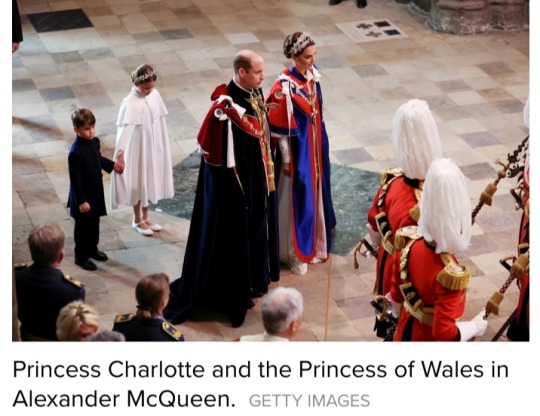
When Catherine disappeared from view in January after announcing a “planned abdominal operation,” the response from internet truthers was one of irate entitlement.
They are now the 1980s tabloids: ravening for intimacies and making stuff up when thwarted.
This wasn’t the boomer generation, who are both more respectful of the royals and more private about their own health.
It was the fortysomething mothers frustrated when they can’t track the phone location of everyone in their life; or the twentysomethings on Snap Map.
Both desperate for their personalised new Netflix season of “The Royals” to drop.
Catherine presents with such stoicism and dignity, it is easy to forget where this new invasiveness started: when she was pregnant with Prince George in December 2012 and hospitalised for extreme morning sickness.
While she was sleeping on the ward, a radio station in Australia rang the hospital switchboard pretending to be the Queen.
They broadcast the nurse’s comments about Catherine’s “retching.”
One could only find this prank funny if Catherine had already — a young, wretchedly ill, pregnant woman — been dehumanised.
George is now ten and his mother hospitalised again, and in that decade, the physical security of ill royals may have tightened but their claim to bodily autonomy seems to have weakened.
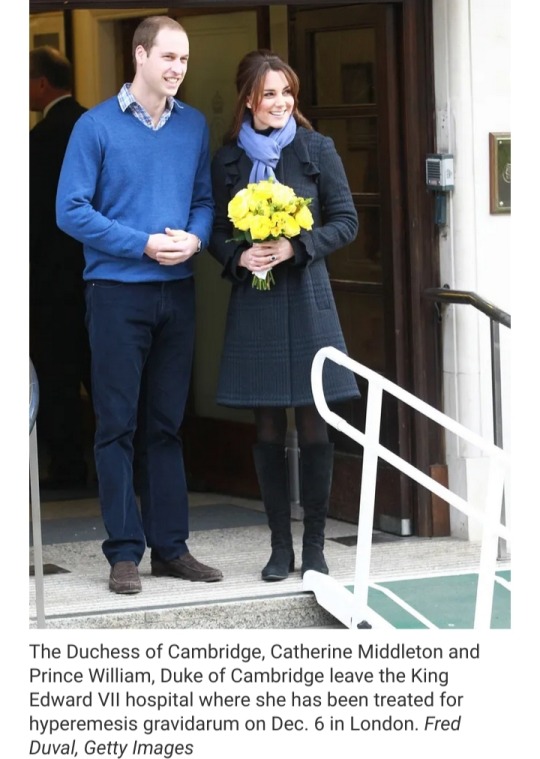
Some say Kensington Palace “brought it on themselves” by their wish for discretion; this claim is duplicitous.
The late Queen Elizabeth II became increasingly debilitated in her final years with not much detail ever given; just as her father, King George VI, died without disclosing his lung cancer.
I’m glad that the British do not subject their heads of state to the same publicised medical reports as the president of the United States; one shouldn’t have to present a stool swab to sit on the throne.
No, instead the apparent justification of all those clicking and posting conspiracy theories “worried for Catherine’s welfare” was this sinful truth.
As a beautiful, 42-year-old mother of three, her drama was more box office than the ailments of those older, a pound of her flesh was worth more.
Pity, Susan Sontag said in her 1978 book Illness as Metaphor, is close to contempt.
Back then cancer was still taboo. Those around the patient, Sontag says, “express pity but also convey contempt.”
Ask any cancer patient and they will say they don’t want pity: it is too isolating, it sets them apart, an unwanted privilege.
This is why the video plea of Catherine was one of affinity, rather than pity or privilege.
Last year, she sat in robes in Westminster Abbey at the coronation of her father-in-law, next to her future king son and future king husband.
In her video address last week, she sat on a classically English garden bench, pale, alone and in jeans, as bare of pomp as any royal can be.
No mention of kings or titles, just Diana’s ring on her hand.
Rather she gave an appeal, parent to parent, human to human, about her “huge shock” and her care for her “young family.”
And, finally, her kinship with anyone who lives in a vulnerable human body susceptible to a democratic illness like cancer, “you are not alone.”
Or, to paraphrase Richard Curtis:
“I’m just a girl, standing in front of a public, asking for some time to endure gruelling chemotherapy."

NOTE: Additional photos have been included in this article.
#King Charles III#Prince William#Prince of Wales#Princess of Wales#Catherine Princess of Wales#Catherine Middleton#Kate Middleton#British Royal Family#cancer#chemotherapy#preventative chemotherapy#social media#fake news#click farms#bots#trolls#disinformation#misinformation#viral#abdominal surgery#celebrity culture
77 notes
·
View notes
Text
AI Click Farms 2024
AI Agents: Multimodal Models as Phone Users.
🚀 Quick Start
#MLsoGood
#machinelearning#artificialintelligence#art#digitalart#mlart#ai#datascience#algorithm#bigdata#ml so good#click farms
0 notes
Text

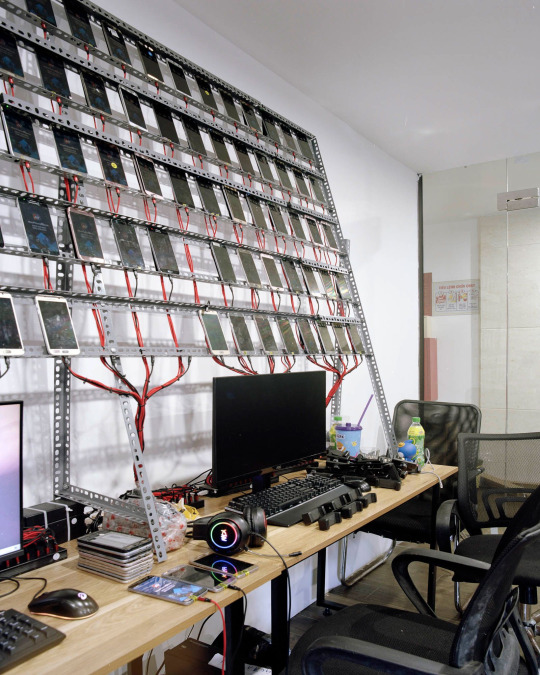
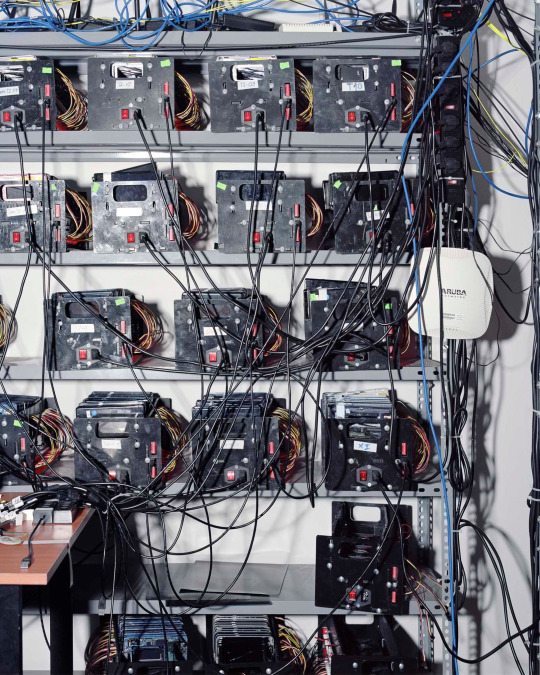
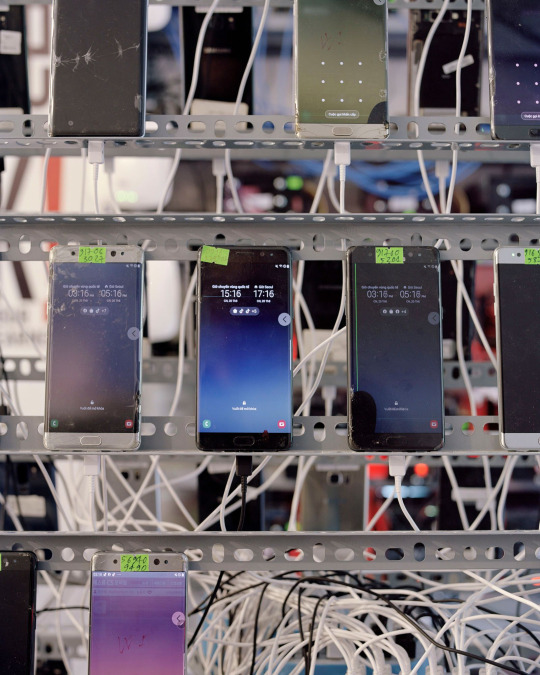
"Click-Farms" in Vietnam
Photographed by Jack Latham — 2024
#photography#art#technology#vietnam#portrait#click farm#internet#jack latham#aesthetic#cyberpunk#contemporary art#architecture#curators#curators on tumblr
671 notes
·
View notes
Text

via
#if you click the source it has the reason for the yellow coloring#sheep#animals#nature#photography#wool#yellow#farm
1K notes
·
View notes
Text
Recently, I was sent a job listing. It called for a graphic designer "to produce direct response static & video ads for various social media channels, such as Facebook, TikTok, Snapchat, and YouTube." So, even though it was asking for a graphic designer, it wasn't a graphic design job—it was an advertising/social media/videography job. The career I've dedicated eight years of my life to is the bit the ad referred to as 'static'.
Ever since, I've been thinking about this idea that video is the future, and also I have been (not coincidentally) extremely depressed. Not to be all "you kids and your phones," but...
In advertising, your consumer's attention is money. Video is THE most attention-demanding form of advertising and therefore the most bang for your buck. It's why Facebook fudged their own stats for the effectiveness of pivoting to video so aggressively in the first place. If your consumer is reading something—a magazine, a poster, a book, something on their phone—then they're still listening, and if something else demands their attention, they'll just look up. If they're listening—to somebody talking, to music, to a podcast—then their eyes and hands are free to do whatever they like. They can look at the world around them, which involves many forms of competing visual advertising.
Video is a media form that doesn't stop. It keeps talking when your consumer looks up, and then keeps moving to grab their visual attention again. The best method for advertising is one that a consumer has to exert energy to not pay attention to.
(—This is why I hate video so much as somebody with ADHD. When my dopamine and blood sugar are low, focusing past someone playing TikTok audio is hard enough for me that it hurts. I've never had the same problem with radio or with like... idk, billboards. And TV is kind of bad, but at least it makes predictable sounds, whereas every person who films a TikTok with sudden screams or yelling in it is, in my opinion, going to hell.)
This is why the UI for platforms like TikTok and Instagram have autoplay, algorithms that disappear things you've seen so quickly, no scrub bars, and don't have skip or pause buttons. Your consumer has to keep their phone in hand to keep swiping or scrolling to properly engage. If that consumer can't stop a video or go back, then the platform can train them not to look up until the video is over. Anxiety that a user will lose their place or not be able to keep up with what is happening is part of what keeps them from looking away.
This is also a reason to be suspicious of why so many tech companies are obsessed with VR in general. A phone that people have to hold and look at and listen to is pretty good, right? But they can ultimately still put it down when an ad plays. It would be way better if we could put the advertising somewhere that tracks and follows their eye movements so that they literally can't look away.
We all know that text is still a better, faster, and more information-dense delivery system. Sometimes I see people mourning the pivot to video because it's a worse way to consume information. They're right! It is! But social media platforms have NO INTEREST in providing their users with like, actual reliable information. If they did, then social media companies would have no interest in AI.
(—This is also why they have no interest in fighting misinformation on their services. People who get radicalised are very engaged platform users. And the people who radicalise them come with massive budgets for ad spend.)
All social media platforms want is to get consumers hooked on their content so that they'll continue to deliver ad revenue. Video is the best way of achieving that. That's why we're all pivoting to algorithms and video. That's why Tumblr Live exists and Snapchat miraculously has not died.
Anyway. I chose to become a graphic designer.
#graphic design#DON'T pivot to video. Just never do it.#source: I have worked in communications for five years#remind me to post about how Facebook farms what my old comms team called 'rage clicks' sometime#writing essays on tumblr dot com
154 notes
·
View notes
Text



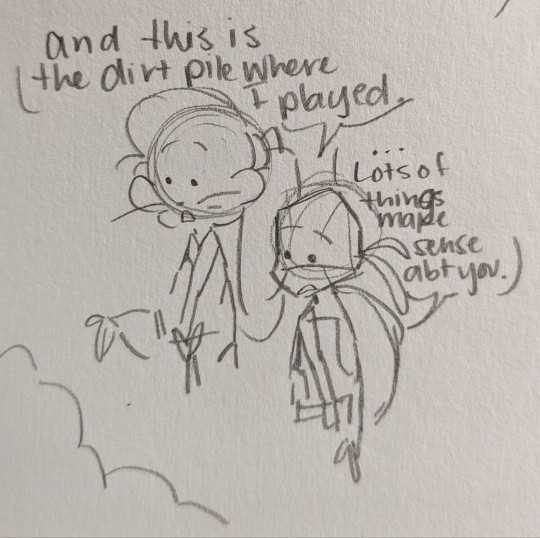
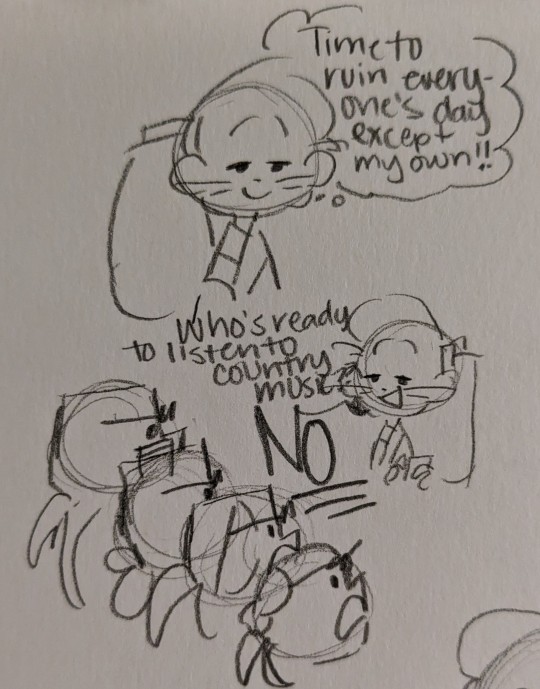

What's Yuichi like? I've only seen 18 seconds of the show and my parents booted me from Netflix
#rabbit samurai#usagi yojimbo#srtuc#yuichi usagi#rottmnt#leosagi#u have to click on the last photo cause tumblr cropping sucks#if he didn't grow up on a farm plz dont tell me bc i have so many jokes#fr life i do...
107 notes
·
View notes
Note
just saw the crybaby seal asks and it's funny to me because i just got recommended this video yesterday

took a screenshot because i was like omg kon el <33
TRENDING WITH KON ASKDJFJKDSFHKS
#answers#wildtreevampire#selkie au kon would Not farm baby jon for clicks but he WOULD take so many videos and send them to kara.
24 notes
·
View notes
Photo

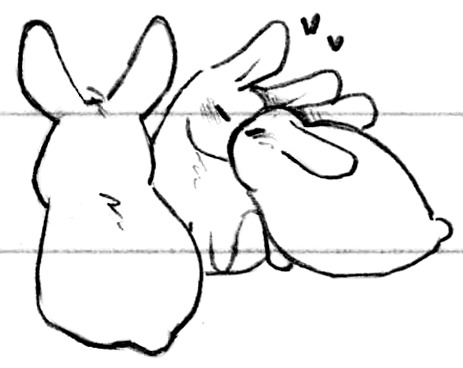
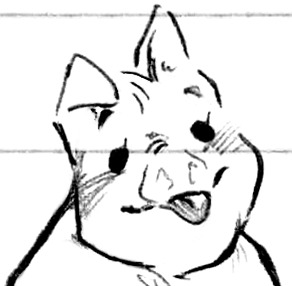



Bunnies and piggies (Patreon)
#Doodles#Original#Although please click the link! Those bunnies are very inspired by evenlyevi!! They are so cute I love them!!#The yellow lineart and the little nub-shaped body did me in completely ;; They are so cute <3#It makes me so tempted to design some Just Desserts pets based on fruit silhouettes haha#Or other ingredients but fruits are rather common sweets :0 I suppose Taffy is based on cotton candy but that's cheating ♪#Love bunnies <3#As for the piggies I've been itching to try and decide a sweet-version I could incorporate to make a JD pig!#I've got a cow - a chicken - sheep as mentioned lol - I need more classic farm animals! And pigs are super cute!#They're probably the one feral-shape that I feel somewhat competent at drawing lol#Still not completely but somewhat! Trotters are so cute#Maybe those curled ribbon candies for the curly tail hmmm#I haven't looked at pig faces enough to know exactly where to put their mouths straight-on - it's right under the nose yeah?#It feels so obvious and easy in profile! Or even the one with her tongue stuck out lol#Gotta get back into drawing Mila just to practice her cute face#I love her dimples too hhghhh cutes!! I am weak!!#So many cute little lads out there just existing#Love that
20 notes
·
View notes
Text


find yourself an AnWL bachelor who barks but only in conditions that contradict each other which means his barking dialogue will never actually show up in th
#this is my girlfriend. yes he barks at people#it finally clicked looking at the inn residents’ dialogue about rock that they view him more like a family pet than a family member#obsessed with how much dialogue is written for scenarios that Can Not Happen#example: everyone has personalized dialogue telling you how a dish/herb/fish/dairy product was even gifts they don’t accept#with this specific dialogue#the conditions are that you show him your dog and you’re not married to him#but his pathing will literally never take him within the bounds of your farm unless you’re married to him#and you can’t take your dog outside your farm#if his schedule changes later with the other dudes lmk but i’ve never seen this happen#marvelous pwease release my very well behaved dogboy. he will NOT cause havoc#hm anwl#harvest moon another wonderful life#my art#?#it’s a quickie scribble so not really#where’s his leash? oh don’t worry he’s very friendly (he is a complete menace)
48 notes
·
View notes
Text
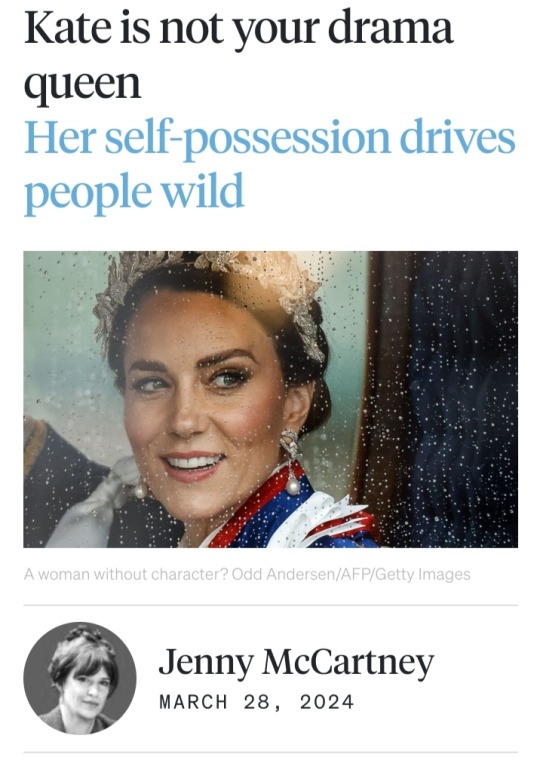
Just over a decade ago, the late novelist Hilary Mantel (6 July 1952 – 22 September 2022) delivered a lecture to an event at the London Review of Books and triggered national outrage.
In the course of a talk on “Royal Bodies,” which ranged widely across royal women from Anne Boleyn to Marie Antoinette and Princess Diana, she had made what many perceived as disparaging remarks about Kate Middleton, then the Duchess of Cambridge.
The Duchess, she said, appeared to have been “designed by a committee and built by craftsmen, with a perfect plastic smile and the spindles of her limbs hand-turned and gloss-varnished."
Indeed, Mantel said, Kate “seems to have been selected for her role of princess because she was irreproachable: as painfully thin as anyone could wish, without quirks, without oddities, without the risk of the emergence of character.”
At this, the newspapers were soon in uproar.
The prime minister David Cameron called the comments “completely misguided and completely wrong” and the Labour leader Ed Miliband agreed they were “pretty offensive.”
Mantel doggedly refused to back down, saying that her remarks had been twisted out of context, and that she was in fact writing with sympathy about the perceptions that are forcefully projected on to royal women, the cage in which they are held to be goggled at.
That was true but also perhaps not the entire truth, for there was still a perceptible trace of authorial vinegar in the portrait:
Which of us would be happy to learn, even in sympathy, that we were held at low risk for “the emergence of character”?
Royals are public as well as private figures, of course, and authors are free to hang intellectual ideas on them to try out, as designers do with clothes.
Yet while much of the lecture was sharply perceptive, I didn’t agree with the portrait of Kate.
That word “selected” had rendered her passive, when in fact her behaviour thus far had suggested both an active intelligence and an unusual degree of self-discipline.
The context of her entry into “The Firm” was different from that of other royal brides.
Unlike Diana, who had barely emerged from the fractured chrysalis of her troubled aristocratic family when she first met the much older, more worldly Prince Charles, Kate was a contemporary of Prince William’s at the University of St Andrews.
Her family background, which appeared warm and supportive, was comfortably middle-class.
She seemed generally cheerful and unruffled, even when the press was at the barbed peak of its “Waity Katie” hysteria, trying to goad Prince William into a proposal or abandonment.
After the wedding, in her approach to royal duties, she clearly took the role she had inherited with marriage seriously.
The royal whose attitude her own most resembled was the late Queen Elizabeth II, who had long understood the essential nature of the job:
To turn up to public events looking the part, intuit precisely what was needed — gravitas, fun, consolation or reassurance — and deliver it while keeping one’s personal emotions on the back burner.
This is what a monarchy demands, and the ability to act as an impeccable interpreter of the public mood, year after year, is a particular and testing art.
A few have a natural aptitude for it, but most of us do not, and would quickly find its scrutiny and restrictions intolerable.
Grace under consistent pressure is an admirable quality.
Were a ballet dancer to execute a string of flawless performances, or a pilot to conduct numerous flights without incident, it would not be deemed evidence of an absence of character: quite the opposite.
Yet in Kate — especially for those who increasingly conduct their lives online — serene self-possession seems to drive a proportion of onlookers insane: what lurks behind it, what dark secret is waiting to destroy it, how best might it be disrupted?
The uncomfortable truth is that what many people deeply crave in a young and beautiful royal wife and mother is not competence, but crack-up.

The increasingly bizarre treatment of Kate, or the idea of Kate, is connected to the most dominant phenomenon of our age: a cultural prioritising of drama over duty.
The supply of drama has spilled beyond the confines of the novel, theatre, cinema, or television to become a commodity on which our public figures are judged.
When Mantel spoke of Kate’s apparent absence of emerging “character,” she was assessing her primarily through the hungry eyes of a novelist.
In books, central female characters often generate dramatic tension by chafing against their circumstances, by the intensifying dazzle of their discontents, something that Kate refused to transmit.
In contrast, Mantel described Diana as a “carrier of myth”: Diana, publicly trapped in the disappointments of her marriage, certainly carried more plot twists than any author had a right to expect.
Unfortunately for her, the final one was her shockingly premature death.
Set against this artistic conception of “character” — distinctive qualities or flaws that, one way or another, deliver drama — is the societal judgement “of good character,” meaning someone who is broadly reliable and respected in relation to their behaviour to others.

In recent years, the electorate, in line with Neil Postman’s warning in his 1985 book, Amusing Ourselves To Death, has proved increasingly ready to select the former over the latter, even to the marked detriment of our civic health.
The former prime minister Boris Johnson instinctively understood it as his job not to deliver the detail of workable policy but to satisfy the public’s appetite for story:
“People live by narrative,” he once told UnHerd’s Tom McTague.
In the US, Donald Trump — that relentless generator of low mockery and high fury — is now running for a second term as president, after his first one ended in his supporters storming the Capitol building.
Men are often permitted to survive the frantic generation of drama: it is everyone around them who suffers.
Yet women — in art and life — have a greater tendency to be destroyed by it.
There is no strutting female equivalent of the male “hellraiser,” but rather a woman who, soaked in the crocodile tears of the tabloids, is tragically “causing concern” among friends.
Art and its audiences have always relished the restless struggle and disintegration of female characters who are, or become, unmoored from the harbour of marriage and children.
Flaubert’s Emma Bovary — her imagination inflamed by reading novels — is bored with her marriage and disenchanted with motherhood.
She seeks solace in affairs and excessive spending, the consequences of which hasten her suicide.
Zola’s Nana, a courtesan who ruthlessly captivates Parisian society, has her beguiling face eaten away by smallpox.
Janis Joplin and Amy Winehouse, immolated on their blazing talent, are hung posthumously high in the musical hall of fame, next to Sylvia Plath in the poetry section and Marilyn Monroe in cinema.
In Jean Rhys’s Good Morning, Midnight, a middle-aged English woman called Sasha Jansen, mourning an unhappy marriage and a dead child, finds herself in Paris, a vulnerable drifter seeking solace from stray men.
Rhys herself, who died at 88 after a precarious but surprisingly long life, had much in common with her literary creations.
As the writer and editor Diana Athill crisply put it:
“Jean was absolutely incapable of living, life was just hopelessly beyond her.
When she was young, she floated from man to man in a hopeless way… by the time she was old, she floated from kind woman to kind woman.”
In Rhys’s latter years — hard-drinking, irascible and impoverished — Athill and a small group of female friends formed what they called “The Jean Rhys Committee,” which met regularly to ask “what should we do next?”
Rhys’s claim to such loyalty, I suppose, was the weight of her literary talent, her ability to exert an odd kind of fascination, and the fortunate soft-heartedness of her friends.
The dramatic collided with the dutiful and was kept alive by it.

From what I can see, the Princess of Wales exists at the opposite end of the feminine spectrum from Jean Rhys.
Pinned firmly in place by her royal obligations, her wealth, her marriage, and three children, she belongs to the realm of the respectable and dutiful rather than the erratic and dramatic.
She is not a “character” in the artistic sense, nor does she desire to be, but both a survivor and upholder of an institution:
Hers is the territory of the prompt thank-you note, the kept promise, the commitment to public service, the uncomplicated pleasure in children, the stoic endurance of difficult times in the hope that better ones will come along soon.
The public senses an emotional solidity in her, and it is partly why she is held in broad esteem.
In this age of insistent self-definition, duty to others might be an unfashionable concept, but it is nonetheless one that keeps families and institutions from chaos and collapse.
With the advent of the internet, however, anyone with a keyboard can become a form of author, with the freedom to insert a toxic form of drama into real-life situations.
What was extraordinary, during the Princess of Wales’s recent health problems, is how speedily and carelessly such speculations overrode the bounds of decency.
It was already known that she had undergone major abdominal surgery and was taking time to recover.
And yet — egged on by the participation of silly celebrities and malicious US comedians — conspiracy theories about cosmetic surgery and affairs and nervous breakdowns spread like knotweed.
According to social-media researchers, these were also vigorously introduced and amplified by fake accounts set up on Twitter and TikTok, some associated with Russia-linked disinformation eager to spread the termites of mistrust and doubt in Western institutions.
Only the Princess of Wales’s revelation of cancer, which carries a testing drama all its own, served to shut up the majority of them.
Unlike these callous gossips, Mantel recognised her own complicity in dehumanising royalty.
Upon encountering the late Queen, the novelist said: “I passed my eyes over her as a cannibal views his dinner, my gaze sharp enough to pick the meat off her bones.”
The Queen looked back at her, she said, briefly hurt. Mantel warned of the way in which “cheerful curiosity can easily become cruelty” precisely as it has done in recent weeks.
Her talk concluded with a prescient instruction for those who comprehend monarchy mainly as a source of entertainment: “I’m asking us to back off and not be brutes.”
In the midst of treatment and recovery, the most hitherto stable of royal women could be forgiven a keen sense of injustice:
Her job description, it seems, must now include the ability to weather the online public’s fits of brutish mania for drama.
With its contempt for duty, and its savage appetite for story, it is hungry to chew up far more than just the Princess of Wales.

NOTE: Additional photos have been included in this article.
#Princess of Wales#Catherine Princess of Wales#Catherine Middleton#Kate Middleton#British Royal Family#cancer#chemotherapy#preventative chemotherapy#disinformation#misinformation#fake news#trolls#bots#click farms#targeted attack#malicious gossips
92 notes
·
View notes
Text

[template | portrait maker]
Saw @togepies did this, and it only felt right to fill it out for little farmhand Vikt (i.e. Victor!), since I've been deep in Stardew again. You know, a little peek into the sort of life he could've had if it wasn't for being conditioned into an evil killing machine. :)
#have a little Edit that he inherits the farm from his dad versus gramps. you know. for the feels.#and yeah he uh. immediately clicked with harvey. which didn't surprise me akjshf#and he apparently gets along most with fellow Older Dudes 😂#.templates#oc: vikt | sdv universe
11 notes
·
View notes
Text
𝗅𝖺𝗌𝗍 𝖽𝖺𝗒 𝗈𝖿 𝗌𝗎𝗆𝗆𝖾𝗋🌻💛✨🗿𓍯
𝗁𝗍𝗍𝗉s://instagram.com/
38 notes
·
View notes
Text
It’s been a few days, I wonder how far I can go without clicking on them

#sky children of the light#thatskygame#sky cotl#that sky game#coco box thinks#am struggling#I want to click on it so bad#idk why am doing this to myself#am just doing it because I can#idk I think it interesting#I wonder how much candles I have#I’ve been farming for a few days
27 notes
·
View notes
Text
Hm I would love to continue Dee's dol journey and play it more but I feel like I’m starting to run out of stuff
#atm I’m mostly thinking about it and not really playing it much anymore#i know there’s still a lot I haven’t done but I hadn’t expected that the content for the LIs would run out so quickly#now tbf I still have Kylar to explore but I’m just not that I to them so their whole.. thing (gestures vaguely) will happen when it happens#actually I’m being unfair I only mean Sydney when I say that#..and Avery#cause I know you can basically romance everyone without consequences but:#i wont ever romance Robin bc I’d like to uphold that personal moral for Dee#Kylar will happen when it happens but I unfortunately didn’t click with them as much as I had hoped#Eden didn’t do much for me < also unfortunately and unexpectedly#im kinda working on Alex but imma be honest the whole farm/wren thing is really tedious#although I’m slowly working on it#and then Whitney…. I’m tempted but also my petty ass doesn’t want to let them win#plus i feel like it would be somewhat ooc for Dee#yeh she doesn’t hate him as much anymore bc there’s bigger fish to deal with now but he hasn’t really changed his behavior at all#again I would be on Whitney if I could retaliate and not let myself be dragged around like a chew toy#dol rambles#ah i forgor the woods and the hawk. so I’ve tried the wolves in one run it was okay but the ongoing 10+ wolf sex encounters tire me out#<not like that
8 notes
·
View notes
Text

idk if i can get to a thousand, guys thats a lot of boops 😭
#would it be cheating if i just handed my phone to someone else and said PLEASE CLICK THIS BUTTON while i go take a nap?#like the dad who had his kid go XP farming on world of warcraft
6 notes
·
View notes
Text



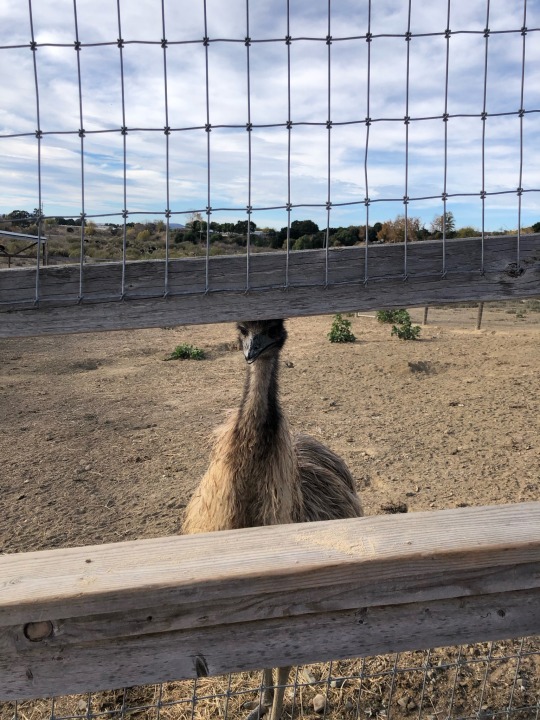


Ostrichland, USA
Solvang, California
#did y’all know there’s an ostrich farm with ostriches and emus where you can FEED THEM?#i’m honestly petrified of birds; especially those big birds but it was so much fun#ostrichland usa#solvang#pismo beach#santa barbara county#san luis obispo#california#southern california#central coast#photography#my photos#click click
7 notes
·
View notes